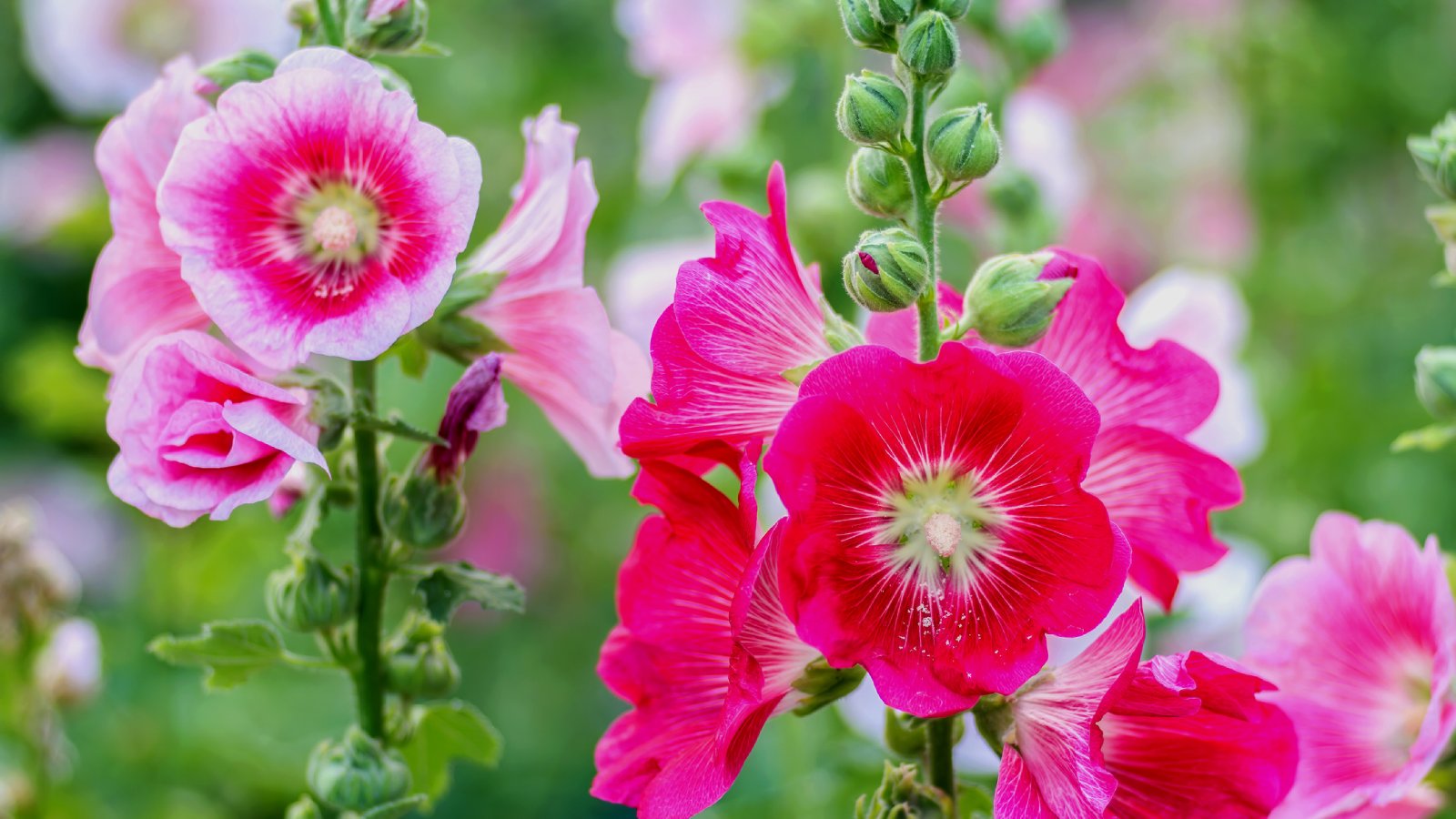Hollyhock Feeding Made Simple: Fertilizing Hollyhocks For Better Blooms
Fertilizing hollyhocks will help these old-fashioned beauties thrive and bloom, adding stately color and height to any ornamental garden.

Caroline Bloomfield

For extra beauty in the garden, fertilizing hollyhocks helps promote vigor and boost their blooms. Hollyhocks are considered heavy feeders and, although composition and soil conditions vary from garden to garden, the soil’s nutrient density is a must. In this guide, we will explore in greater detail how to fertilize hollyhocks, as well as their specific fertilizing needs throughout their growth cycle.
How Important Is It to Fertilize Hollyhocks?
When it comes to hollyhocks, fertilizer plays an essential role in overall plant vitality. Routine feeding aids in their production of flowers and foliage, as well as other necessary processes. Though hollyhock plants can be grown under less-than-ideal conditions, they will often perform poorly are likely to begin showing signs of nutrient deficiencies early in the season. These include the yellowing of leaves, stunted growth, and even an increased susceptibility to disease.
What is the Best Feed for Hollyhocks?
The specific needs of hollyhock plants can vary by species, season, or even location. A firm understanding of the plant’s growth cycle will further help gardeners to meet required soil conditions. Soil tests, before planting, allow for valuable insight into fertility and/or recommended amendments.
Well-balanced, slow-release feeds are often considered among the best fertilizers for hollyhocks. This is especially true during periods of active growth in their first season, which aids in the production of healthy foliage. As the plants move towards bloom in late spring and early summer, hollyhock fertilizer requirements may change, with the focus shifting toward the production of flowers.
When To Fertilize Hollyhock Plants
The appropriate fertilizer for hollyhocks should be applied in a timely manner. This begins at planting time by incorporating finished compost and other rich amendments into garden beds. As a biennial, first-season hollyhocks benefit from routine feeding as the plants work to produce strong stems, large leaves, and a robust root system.
Hollyhocks coming into bloom in their second growing season will also benefit from fertilizer. Feeding them in early spring helps boost their growth and promotes flowering. At this time, hollyhock gardeners use liquid and/or other fast-acting fertilizers that have a higher phosphorus content.
How Often To Fertilize Hollyhocks
Organic or chemical fertilizers, designed specifically for use with ornamental plants, can be applied every few weeks throughout summer or as directed by the manufacturer’s labeled instructions. As the weather cools late in the season you can reduce the frequency of feeding. This will allow the plants to properly prepare for winter. Start fertilizing them again the following spring as soon as they resume growing.
Sign up for the Gardening Know How newsletter today and receive a free copy of our e-book "How to Grow Delicious Tomatoes".
Best Ways To Fertilize Hollyhocks
Hollyhocks can be fertilized in several ways. The most popular are “side dressing” and the use of liquid feeds. Side dressing refers to the process of adding fertilizer around the perimeter of plants near their drip line. Liquid feeds, such as compost teas, are often used as a foliar spray or soil drench. As with the application of any fertilizer,take care to avoid burning or damaging the plants. Use caution to avoid using excess fertilizer. Common signs of overfeeding include the sudden yellowing of leaves and wilt.
Frequently Asked Questions
How Do You Keep Hollyhocks Blooming All Summer?
Growers hoping to prolong the bloom period of their hollyhocks have found the most success through deadheading. After flowering, faded stalks can be removed from the plant. Hollyhock deadheading will often trigger new growth, promoting an additional flush of buds in late summer, provided the conditions are ideal.
Do Hollyhocks Like Coffee Grounds?
There is little evidence to support that the use of coffee grounds is especially beneficial to hollyhock plants. Though composted grounds do add small amounts of nitrogen to the soil, they do very little to affect or change the overall pH levels of garden beds.

Tonya Barnett has been gardening for 13 years. Flowers are her passion. She has transformed her backyard into a cut flower garden, which she regularly chronicles on her YouTube channel http://www.youtube.com/@tonyawiththeflowers.
- Caroline BloomfieldManager of Marketing Communications